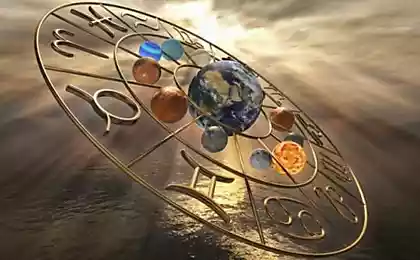497
The emotional map of the brain: why we're ashamed of temples, afraid tonsils

© Adam Voorhes
Whence originate in a human sense? Today, scientists know that for them is our brain, but in any of its fields are born certain emotions? T&P publish a translation of the article and constitute the "emotional brain map" to understand what we feel, why the anger is similar to happiness, and why people can not live without gentle touches.
Guilt and shame: the temporal lobe
It is easy for us to understand how memory or can be processes in the brain. However, feelings are not so smooth, partly because in speech we use phrases like "broken heart" to describe sadness or "blushing furiously" to describe shame. And all the same feelings is a phenomenon of neurophysiology: the process that takes place in the tissues of the main organ of our nervous system. Today, we may partly estimate it thanks to the technology of neuroimaging.
In the framework of their research, Peter Michl and several of her colleagues from the Ludwig-Maximilian University in Munich has recently made a series of MRI images. They sought to find areas of the brain responsible for our ability to feel guilty or ashamed. Scientists have found that shame and guilt, it seems, are neighbors in the neighborhood, although for each of these feelings and there is a separate anatomical region.
Experts asked participants to imagine that they feel guilty or ashamed, and in both cases, it activated the temporal lobe of the brain. The shame involved in them, anterior cingulate cortex, which monitors the external environment and reports to a human error, and parahippocampal gyrus responsible for remembering scenes from the past. Wine, in turn, "included a" lateral occipital-temporal gyrus and middle temporal gyrus — the center of the vestibular analyzer. In addition, the ashamed of people started to work the front and middle frontal gyrus, and those who felt guilty were more active amygdala (the amygdala) and the insular lobe. The last two areas of the brain are in the limbic system, which governs our basic emotions in a series of "fight or flight, the internal organs, blood pressure, and other parameters.
Comparing the MRI brain scans of people of different sex, the researchers found that women fault affected only the temporal lobe, and men in parallel started working frontal lobe, occipital lobe and the amygdala — one of the most ancient elements of the brain that are responsible for feelings of fear, anger, panic and pleasure.
Fear and anger: amygdala
During fetal development embryo limbic system is formed immediately after the barrel, which organizes reflexes and connects the cerebrum with the spinal cord. Her work, feelings and actions, which are necessary for the survival of the species. The tonsils are an important element of the limbic system. These areas are located close to the hippocampus, inside the temporal lobes, and aktiviziruyutsya when we see food, sexual partners, rivals, crying children and so on. A variety of reactions to fear — is also their job: if the night in the Park you feel like you should be a stranger and your heart begins to race, this is due to the activity of the tonsils. In several independent studies conducted in different centres and universities, professionals found out that even artificial stimulation of these areas causes a sense of impending imminent danger.
Anger is also largely a function of the amygdaloid bodies. However, it differs from fear, sadness and other negative emotions. Human anger is amazing because similar to happiness, as joy and pleasure, it makes us move forward, while fear and sorrow are forced to step back. Like other emotions, anger, rage and fury cover very different areas of the brain: after all, in order to realize their impulse to this body need to assess the situation, refer to memory and experience, to adjust the production of hormones in the body, and more.
Tenderness and consolation: somatosensory cortex
In many cultures, the sadness and shock is hidden: for example, in British English there is even an idiomatic expression "keep a stiff upper lip", which means "not to give their feelings." However, neuroscientists say that from the point of view of the brain physiology people just need other people's involvement. "Clinical experiments show that loneliness provokes stress more than any other factor," says a German scientist, author of "the Science of happiness Stefan Klein. "Loneliness is a burden for the brain and body. It becomes anxiety, disorder in thoughts and feelings (the result of the work of stress hormones) and the immune system. Isolated people are sad and sick."
One study after another shows that companionship beneficial for a person physically and spiritually. It prolongs life and improves its quality. "One touch of one who is close to you and deserves your trust, eases sadness," says Stefan. "This is the result of the work of neurotransmitters — oxytocin and opioids, which are released in moments of tenderness".
Recently, British researchers were able to confirm the theory of the usefulness of caress by means of computer tomography. They found that touch other people provoke a strong burst of activity in the somatosensory cortex, which is constantly tracking all of our tactile sensations. Scientists came to the conclusion that the impulses that arise when someone gently touches our body in difficult moments, related to the process of isolation from the General stream of critical stimuli, able for us to change. Specialists also noticed that the participants experienced grief easier when they held the hand of a stranger, and much easier when their palm touched the closest person.
Joy and laughter: the prefrontal cortex and hippocampus
When we feel joy, experience happiness, laugh or smile, our brain "lights" a lot of different areas. In the process of creating and processing of positive emotions involved are already familiar to us, the amygdala, the prefrontal cortex, the hippocampus and the cortex of the anterior insular lobe of the brain, so a feeling of joy, anger, sadness or fear, covers the whole brain.
In joyful moments right amygdala becomes much more active the left. Today it is widely believed that the left hemisphere of our brain is responsible for logic and right for creativity. Recently, however, we know that it is not. To perform most of the functions of the brain needs both parts, although the asymmetry of the hemispheres exist: for example, major speech centers are on the left, while the processing of tone and emphasis more localized to the right.
The prefrontal cortex is several areas of the frontal lobes that are in front of the hemispheres, just behind the frontal bone. They are associated with the limbic system and are responsible for our ability to identify their goals, to develop plans to achieve the desired results, change course and improvise. Studies show that in happy moments in women the prefrontal cortex of the left hemisphere more active than the same area on the right.
Hippocampi that are situated deep in the temporal lobes, along with the tonsils help us to separate important emotional events from the minor to the first can be saved in long term memory, and the second throw. In other words, hippocampi appreciate the happy event from the point of view of their significance for the archive. Cortex anterior insular lobe of the brain helps them do it. She is also associated with the limbic system and the most actively behaves when one recalls pleasant or sad events.
Lust and love are not emotions
Today the human brain studied thousands of neuroscientists around the world. Nevertheless, while science has been unable to determine what is emotion and feeling. We know that many feelings are born in the limbic system — one of the most ancient elements of the brain. However, perhaps not all that we traditionally recognize emotions, is really them. For example, the lust from the point of view of the physiology of the brain is not like fear or joy. His impulses do not originate in the tonsils, and in the ventral striatum, which is also called "Central rewards". This area is also aktiviziruyutsya during orgasm or eating delicious food. Some scientists even doubt that lust is a feeling.
The lust is different from love, which activates the dorsal striatum. It is curious that the same area of the brain uses, if a person uses drugs and becomes dependent on them. However, periods of love, we certainly feel happiness, fear, anger and sadness more often than in calm periods, and this means that love, you may want to consider the amount of emotions, desires, and impulses.
Source: theoryandpractice.ru























